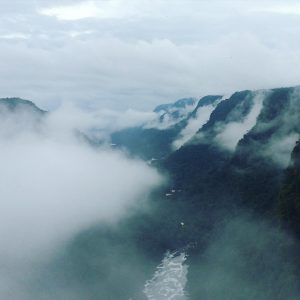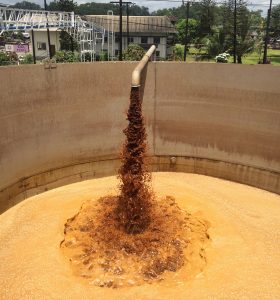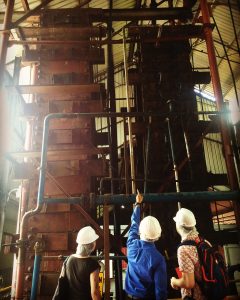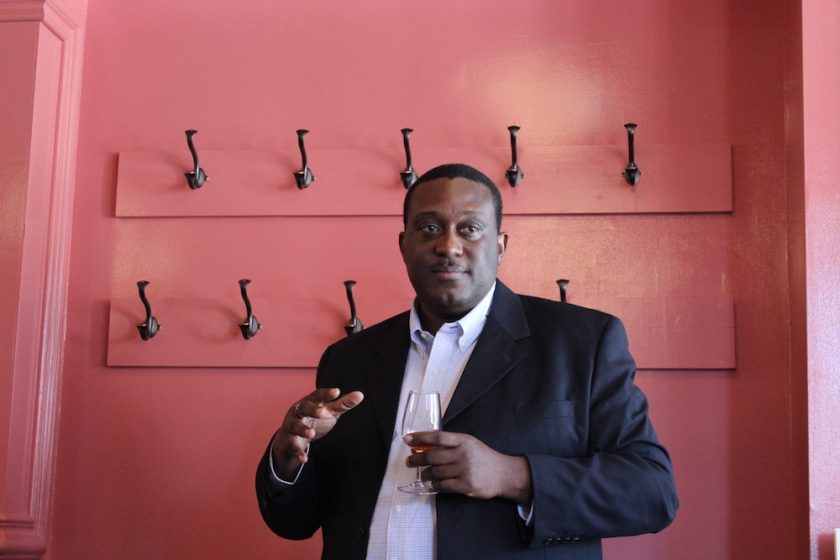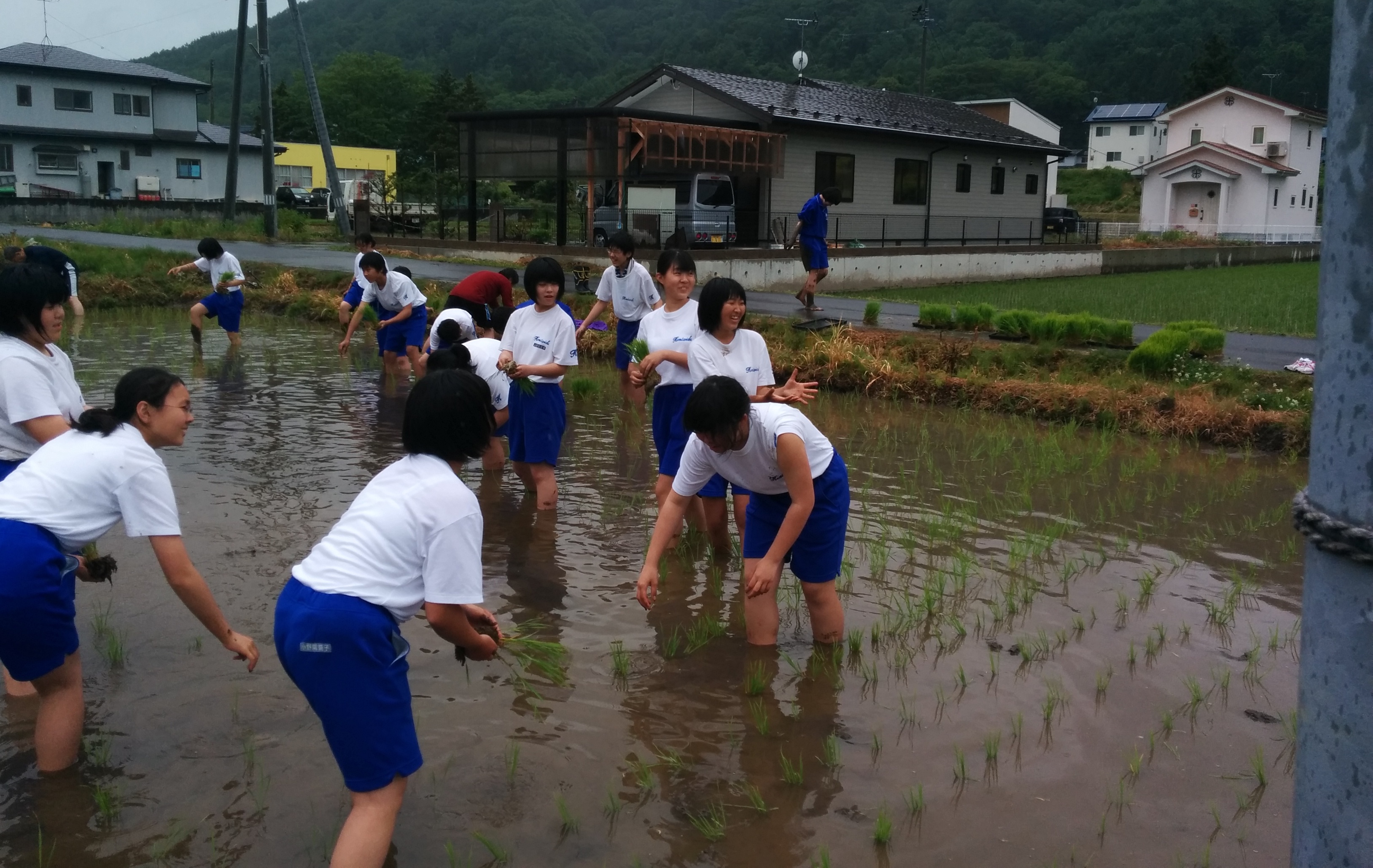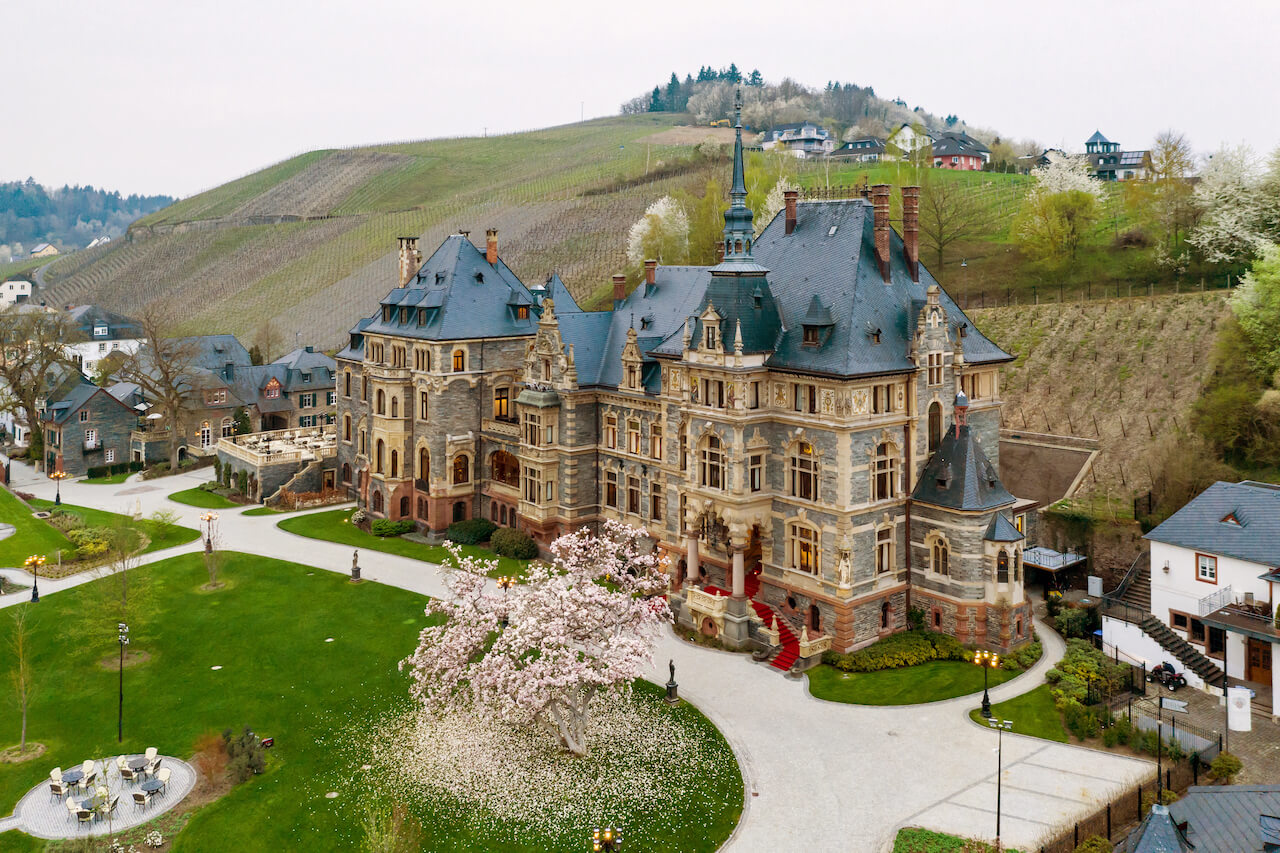Demerara Distillers Limited (or DDL), housed at the legendary Plantation Diamond, is unquestionably among the most significant rum producers in the world.
At its peak, Guyana had more than 300 operating plantation rum distilleries. Today, there is just one left. But bartenders, cocktail lovers, and rum aficionados all over the world over revere the name Demerara, and with good reason. The sugar and spirits of Guyana are rich, heavy, and generous– unique in the opulence they offer. While the sugar is coveted as a cocktail component behind bars around the globe, it’s not a protected term; much of the “Demerara sugar” you might find at the grocery store today is in fact from Mauritius, Panama, or *gasp* Florida. But there is only one place left that can bring you Demerara rum: DDL. Anytime you see the word “Demerara” on a bottle of booze today, you know exactly who distilled it.
Just like Demerara sugar, DDL’s Master Distiller Shaun Caleb is big and welcoming, a sweet and joyful companion; and just like Demerara rum, his playful exterior belies the depth, complexity, and seriousness of his purpose. Shaun has degrees in chemistry and engineering, was behind many of the largest technical innovations in Guyana over the past few decades, and has been a major force in expanding the range, scope, popularity, and sustainability of Demerara rum in recent years. We were privileged to sit down with him and learn a bit more about the history and unique qualities of Guyana’s national spirit.
SHAUN CALEB: It all started in 1998, when the El Dorado 15 Year won the trophy as Best Rum, at the International Wine & Spirits Competition (IWSC). It was the first time any Guyanese spirit had that kind of acclaim. That drew my attention. Once I completed school in 2003, I approached DDL about the possibility of employment. My field of study was chemical engineering.
The Chairman, Dr. Yesu Persaud, was sort of a high-profile national figure. His leadership brought a lot of prominence to DDL– which was also one of the country’s largest employers. So, once it had international acclaim, I felt that I could be a part of something that had more than just local [popularity]. Something bigger than Guyana– with international reach. I worked for five years understudying with the Master Distiller, George L. Robinson, as he celebrated his 40th year with the company. I was able to try everything. I worked not only in the distillery but also at the blending & bottling plant, and on special projects & engineering services for DDL in general, so that gave me a very wide exposure, across the company.
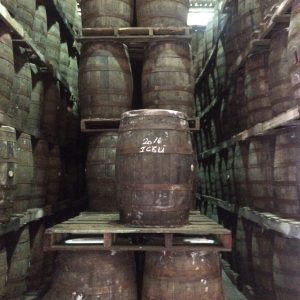
[From 2007 to 2011, Mr. Caleb also engineered and constructed DDL’s newest and largest still, which allowed them to increase their bulk rum production dramatically.]
I took up the mantle of Master Distiller in 2012.
SHAUN CALEB: George L. Robinson, or GLR as he was fondly known, was a towering personality and a pillar of knowledge in Caribbean rum distilling. He was well known, not only for his vast experience spanning more than four decades, but perhaps even more for his calm demeanor and presence, his easy ability as a natural leader to bring out the best in his staff. That made sitting under his tutelage much more enriching. I not only learned the finer points of distilling, but also about paying attention to the man behind the machine. I distinctly recall an early lesson on the [historic French four-column] Savalle still — his personal favorite because of its versatility– ending with the need to respect the skill and integrity of the operator, even if he made a mistake and had to be corrected. Because, at the end of the day, when that operator goes home, he still means the world to the woman and child who are waiting expectantly to greet him. Nothing in his day’s experience at work should diminish that. This may sound a bit parochial now, but in the context of the country in which GLR grew up, it’s the humanity of his sentiments that is most compelling. It’s no surprise that his image is still the face of the West Indies Rum and Spirits Association. I can relate to that image, because I got to see firsthand his larger-than-life character, and his style as a sage storyteller– every lesson was wrapped up in a tale that communicated its finer points and ended with a broader moral. SHAUN CALEB: Both DDL and the brand are a tremendous source of national pride. The founding of Guyana centered around sugar cane. With the byproduct, molasses, rum was an important part of the country since its inception. So, we are seen as both the preservers and purveyors of our national identity, our national heritage. It is a source of pride for Guyanese people here, and all around the world. SHAUN CALEB: Demerara rum, as a category, has other brands besides El Dorado — but we [DDL] make it all. There are certain environmental influences that govern the entire process, from sugarcane to molasses production, all the way up to fermentation and distillation. Our microclimate: high heat, high humidity… the water, high salinity… the quality of the soil, high mineral, and organic content… the sheer diversity of airborne and soilborne microbiological species, including the native wild yeast species. These are all present in both the raw material, the molasses, and the fermentation process. That wild yeast is a constant throughout. [Demerara sugar, though not protected, originates as a terroir-specific term for sugar produced in the Essequibo and Demerara River basin, which runs close to the equator and frequently dips below sea level. The capital, Georgetown, is itself mostly below sea level, with an ancient Dutch sea wall keeping the city intact. The tiny nation, on the northern coast of South America, is up to 75% rainforest and contains some of the world’s largest deposits of silt and sandstone.] SHAUN CALEB: The equator, I think not so much. But yes, the soil being so characteristic of marine deposits from the ocean, as well as the low-lying land, below sea level, where we rely on irrigation and drainage working together with the ocean…. Yes. I see it more as a function of the geography, of where we are located, than of climate. That being said, the climate does allow for the propagation of these microspecies that thrive along the coast. SHAUN CALEB: Exactly. SHAUN CALEB: The process of closure and amalgamation of the sugar estates and distilleries in Guyana [began] in the mid-late 19th century with the imposition of excise tax on sugar by Britain — the Sugar Duties Act of 1846 — and later with massive subsidies to European sugar beet producers in the mid-1880s, which affected the viability of small sugar estates, causing many to go bankrupt, be abandoned, or to amalgamate as an act of survival. Global events of the early-mid 20th century (like the American prohibition, the Great Depression and World War II) and various spates of local industrial actions both led, by 1947, to just 9 of 300-plus original plantations surviving. Consolidation continued even after Guyana’s Independence from Britain [in 1966]. The nationalization of the rum and sugar industry in 1976 [left] only 3 active distilleries remaining: Enmore, Uitvlugt and Diamond. With the incorporation of Demerara Distillers Limited in 1983, and the privatization of the local rum industry in the early 1990s, the process of consolidation concluded with the last distillery to close in 1999. The distillery at Plantation Diamond, on the East Bank of the Demerara River, is the only one surviving today. DDL remains a publicly-traded company, with over 9000 shareholders, none of them holding a majority interest. In that process of consolidation — especially in the nineties, acquiring everything from the Enmore and Uitvlugt estates — DDL has gathered some of the oldest stills in the world under one roof. Every bottle of El Dorado with an age statement on it is a blend from those very historic stills, right? What is it like to work with them? I mean, how do you maintain stills that are over 200 years old and made of wood? And as a follow-up: what do you think makes some of those historic stills unique? You said GLR preferred the French Savalle; do you have a favorite still to use? SHAUN CALEB: It can be quite finicky to work with the old “heritage” stills. First, because of the limited range of operating parameters available as a distiller’s tool for tweaking quality. Second, because of the relatively low efficiency of production on the stills. And third, because of the high cost, care, and attention involved in operating and maintaining them. For instance, if a leak develops on one of the wooden pots, the process of caulking, sealing and tightening the bands around the wooden staves requires a specialist. We minimize these situations with a schedule of planned maintenance, for the wooden parts, for the copper parts, and for cleaning. We’ve found we can get a decade of mostly trouble-free operation before any major maintenance… like targeted repair of wooden staves. Whenever the pots are out of operation for a brief period, they’re kept soaking to avoid warpage or shrinkage. These “heritage” stills are among the oldest in the world, and each is the only one of its kind left — three are made entirely of wood — in use for rum production anywhere in the world today. It doesn’t get much more unique than that! Although they give the lowest yields from a quantitative point of view, the profile of the rums they produce is so robust and unique that it’s all worth it at the end of the day. From a medium-bodied rum with a nicely balanced bouquet of fruity, floral, grassy and sweet aromatic notes [from the Enmore or Edward Henry Porter wooden Coffey still], to heavier-style grassy/woody rums with coffee and chocolate, toffee and caramel notes evocative of Cognac [from the Versailles single wooden pot still], to the heavy-bodied grassy, woody, earthy rum with a Scotch-like undertone [from the 1732 Port Mourant double wooden pot still], the rums they produce add to their singularity, since no other still or style of distillation could replicate those particular profiles in quite the same way. SHAUN CALEB: My personal favorite — the one I use the most — is the [Port Mourant] double wooden pot still. It quenches my thirst for the El Dorado 15, so that alone is enough motivation to pay attention and keep it churning out the good stuff! SHAUN CALEB: The discovery of oil has had a potentially transformative effect on the Guyanese economy. As a significant contributor to the national coffers, and a major part of foreign exchange, DDL expects this rising tide to life all boats, including sugar and rum. Already we’re seeing interest from oil-and-gas-industry professionals who are quite taken by Guyana’s other “Liquid Gold”… El Dorado! We’re seeing introductions and conversations in far-off parts of the world, by people who travel to and from Guyana for oil, giving them the opportunity to learn about our rich tradition as a distiller of fine rum. This fits within our building of the brand, one word-of-mouth referral at a time. A loyal customer is also the best salesman. What oil has done for DDL so far is to multiply these enthusiastic referrers… We see a potential for growth opened up by this new interest locally and abroad — that can only translate into value as oil transforms the spending power of the average Guyanese. SHAUN CALEB: For the premium El Dorado rums [the 12, 15 and 21 Year], they’re usually enjoyed neat or on the rocks. But by far the most popular in Guyana is the El Dorado 5 Year, in simple mixes with coconut water, ginger ale, cola, cranberry juice or simply a splash of water and ice. There really is no wrong way to enjoy the 5-Year-Old, even neat! For me personally, it depends on my mood, my company, and the occasion. If I go for cocktails at a bar or restaurant, it’s definitely a Rum Old Fashioned with the El Dorado 12 Year, or a Daiquiri with the El Dorado 3 Year. With friends out “liming” [hanging out], I keep it simple, so El Dorado 5 Year with coconut water, or depending on the crowd, I’ll up my game to a 12 Year on the rocks, poured from a decanter… or a double El Dorado 15 Year, neat — usually to end the night!